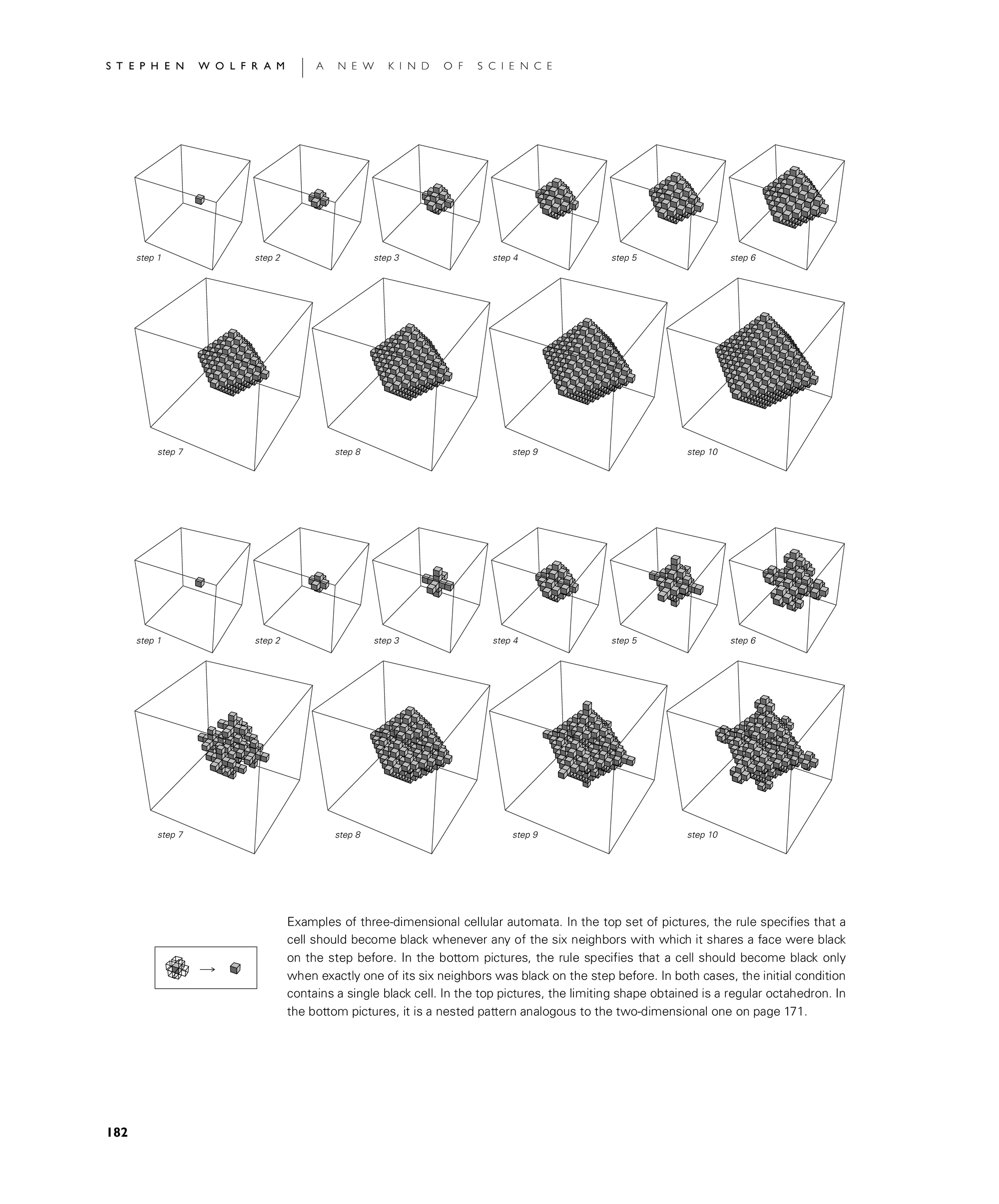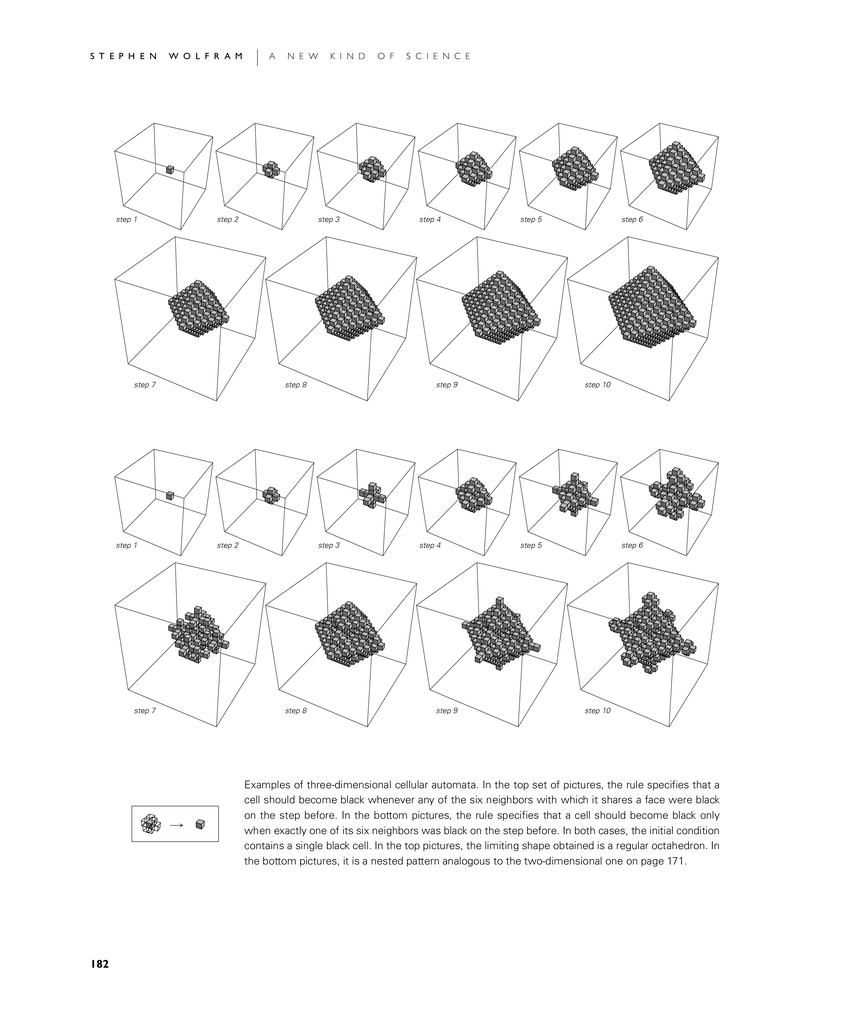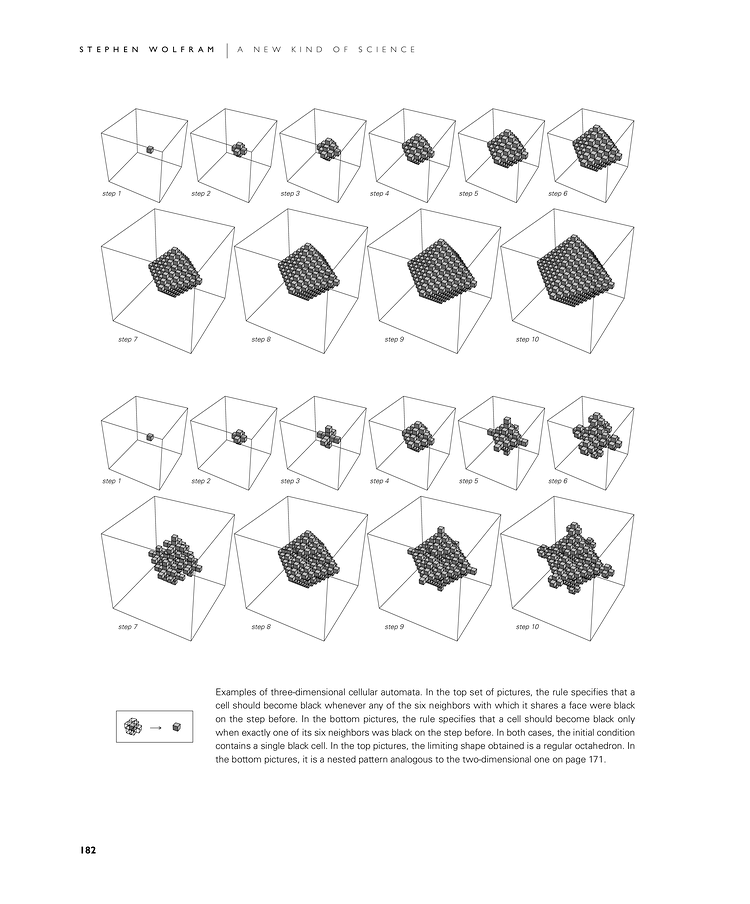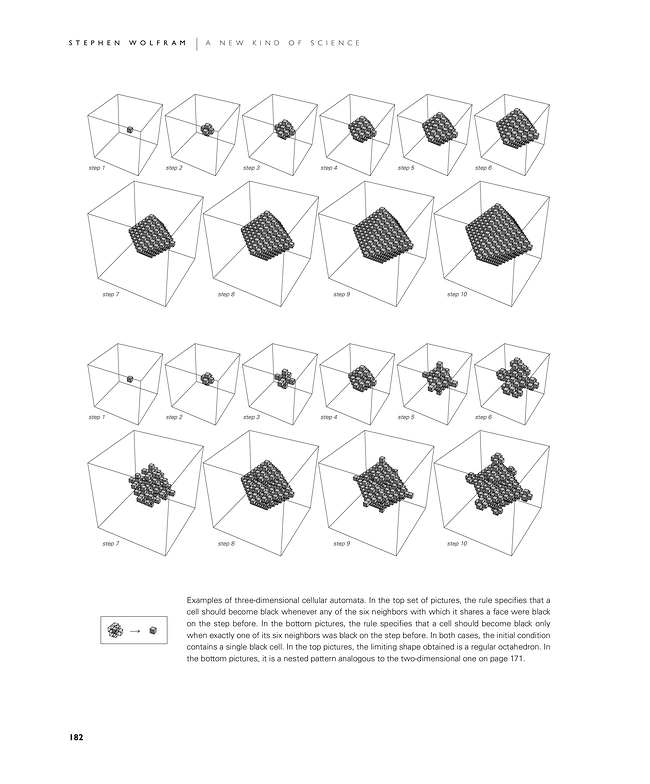Examples of three-dimensional cellular automata. In the top set of pictures, the rule specifies that a cell should become black whenever any of the six neighbors with which it shares a face were black on the step before. In the second set of pictures, the rule specifies that a cell should become black only when exactly one of its six neighbors was black on the step before. In both cases, the initial condition contains a single black cell. In the top pictures, the limiting shape obtained is a regular octahedron. In the bottom pictures, it is a nested pattern analogous to the two-dimensional one on page 171.



